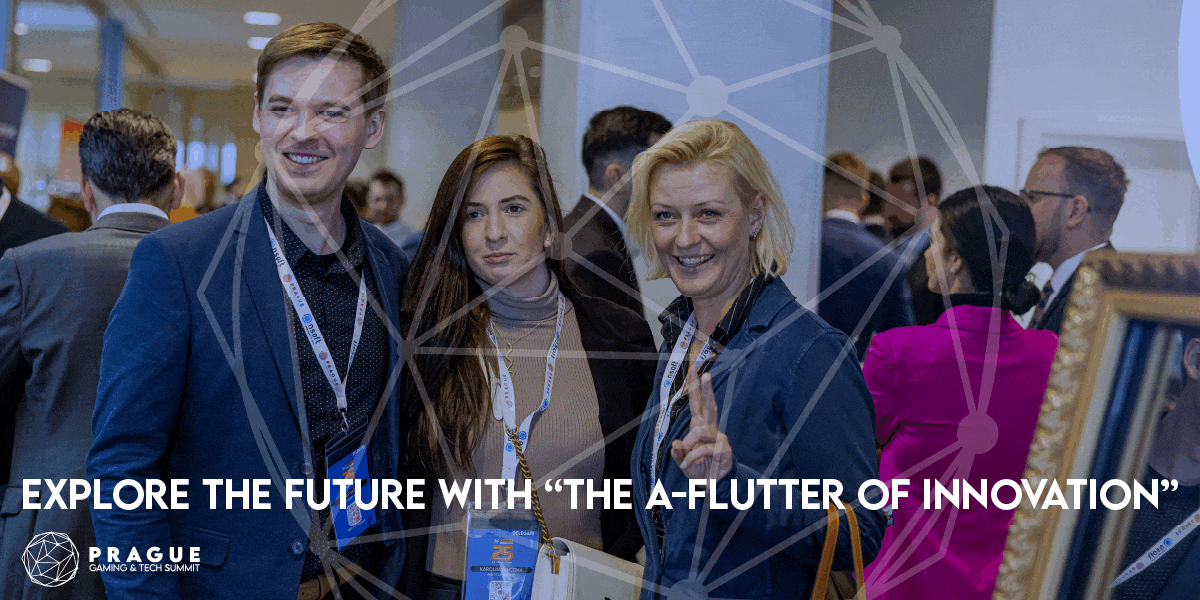Latest News
Millionaires on the Move: Where are the World’s Wealthy Migrating to and from in 2024?
LONDON, June 18, 2024 /PRNewswire/ — The UK is expected to see an unprecedented net loss of 9,500 millionaires in 2024 — second only to China worldwide, and more than double the 4,200 who left the country last year, which was itself record-breaking following the exodus of 1,600 HNWIs in 2022. For the third year running, the UAE looks set to take first place as the world’s leading wealth magnet, with a record-breaking 6,700 moneyed migrants expected to make the Emirates home by the end of the year, boosted by large inflows from the UK and Europe.
The Henley Private Wealth Migration Report 2024, released today by international investment migration advisory firm Henley & Partners, features the most significant projected millionaire migrant inflows and outflows globally as well as the W15 ranking of the world’s top 15 countries for millionaires, centi-millionaires and billionaires.
China is again on track to be the biggest millionaire loser globally, with an anticipated net exit of 15,200 HNWIs this year (compared to 13,800 in 2023) whereas India has stemmed its wealth exodus, dropping down to 3rd place after the UK with just 4,300 millionaires projected to leave the country in 2024 (compared to 5,100 last year). South Korea’s HNWI flight is expected to rise with a forecast loss of 1,200 millionaires (compared to 800 in 2023) while the tsunami of millionaires that fled Russia following the outbreak of the Ukraine war appears to be abating with only 1,000 projected to relocate this year (compared to 8,500 in 2022 and 2,800 in 2023).
Dominic Volek, Group Head of Private Clients at Henley & Partners, says 2024 is shaping up to be a watershed moment in the global migration of wealth: “An unprecedented 128,000 millionaires are expected to relocate worldwide this year, eclipsing the previous record of 120,000 set in 2023. As the world grapples with a perfect storm of geopolitical tensions, economic uncertainty, and social upheaval, millionaires are voting with their feet in record numbers.”
UAE remains world’s leading millionaire magnet
With its zero income tax, golden visas, luxury lifestyle, and strategic location, the UAE has entrenched itself as the world’s number one destination for migrating millionaires and is poised to attract nearly twice as many millionaires as its nearest rival, the US, which is projected to benefit from a net inflow of 3,800 millionaires in 2024.
Singapore takes 3rd prize again this year with net inflows of 3,500, while the perennially popular destinations for migrating millionaires, Canada and Australia, follow in 4th and 5th places with net inflows of 3,200 and 2,500, respectively. European favorites Italy (+2,200), Switzerland (+1,500), Greece (+1,200) and Portugal (+800) all make it into this year’s Top 10 for net millionaire inflows along with Japan, which is on course to welcome 400 wealthy migrants, boosted in part by an accelerating trend of Chinese HNWIs moving to Tokyo that started post-Covid.
The other big millionaire losers in 2024
Besides China, the UK, India, South Korea, and Russia, the remaining places in the Top 10 millionaire outflow ranking are taken up by Brazil where a millionaire drain of 800 is projected this year, followed by South Africa (-600), Taiwan (-400), and Vietnam and Nigeria, which are both set to see 300 millionaires take flight.
But as Dr. Hannah White OBE, Director and CEO of the Institute for Government in London points out, HNWIs are leaving these other countries for quite different reasons from the UK: “Both China and India are seeing high net outflows because of the success of their sizeable economies in generating new millionaires, although slowing wealth growth in China in recent years could mean sustained losses become more damaging over time. As do those from many other developing nations, including notably Brazil, Vietnam, South Africa, and Nigeria, Indian millionaires often depart the sub-continent in search of a better lifestyle, safer and cleaner environments, and access to more premium health and education services. Elsewhere, regional threats and uncertainty over the security stance of America following a potential Trump victory in the 2024 US presidential election in November mean that South Korea and Taiwan are continuing to see net outflows of HNWIs.”
The surge in millionaire migration is fueling a corresponding boom in the investment migration sector. Henley & Partners has received record levels of enquiries about residence and citizenship by investment programs over the past 12 months from nearly 200 different countries. The top two nationalities currently driving demand are Americans and Indians, with Brits, Filipinos, and South Africans remaining in the Top 10 as they have done for the last five years.
View original content:https://www.prnewswire.co.uk/news-releases/millionaires-on-the-move-where-are-the-worlds-wealthy-migrating-to-and-from-in-2024-302172211.html

Latest News
COCA Celebrates Q2 2024 with Record-Breaking Milestones and New Launches
HONG KONG, Aug. 7, 2024 /PRNewswire/ — COCA, a pioneering force in the crypto wallet and financial services industry, has achieved several remarkable milestones in Q2 2024. Thanks to the steadfast support of its user community, COCA has launched new features, expanded its partnerships, and garnered prestigious accolades, further solidifying its position as a leader in the crypto space.
Launch of Physical Cards
COCA has introduced its highly anticipated physical cards, which are now available globally and compatible with Apple Pay and Google Pay. These cards allow users to make transactions with ease, earning cashback rewards on their purchases. This significant launch marks a step forward in integrating crypto with everyday financial activities, enhancing user convenience and financial flexibility.
Wallet Growth Milestone
The company has reached a significant milestone with 510,000 active wallets, reflecting a 102% growth quarter-on-quarter. This surge in active wallets highlights the increasing trust and adoption of COCA’s platform, as more users join the COCA community to manage their crypto assets securely and efficiently.
Transaction Volume Surge
In Q2 2024, COCA processed over USD 450,000 in transactions through its platform, demonstrating the robust usage and popularity of its financial services. This impressive transaction volume underscores COCA’s commitment to providing smooth and efficient crypto payment solutions.
Integration with Revolut
COCA has made it easier for users to fund their wallets by integrating with Revolut. This new feature allows seamless loading of crypto assets, enhancing the overall user experience and accessibility of COCA’s services.
Award Recognition
COCA has been honoured with the “Best Startup” award in the Financial Revolution category at CONF3RENCE & BLOCKCHANCE 2024. This award is a testament to COCA’s innovative approach and significant impact on the future of finance, recognizing its efforts in driving forward the digital financial ecosystem.
New Strategic Partnerships
COCA has formed strategic partnerships with industry leaders such as Wirex Pay and GoMining. These collaborations aim to provide users with enhanced rewards and a superior overall experience. The partnerships signify COCA’s dedication to expanding its ecosystem and delivering greater value to its users.
Welcoming Pavel Matveev
COCA is excited to announce the addition of Pavel Matveev, Founder of Wirex, to its team as a Strategy and Product Advisor. Pavel’s extensive experience and visionary approach are expected to drive COCA’s strategic initiatives and product development, contributing to the company’s continued growth and innovation.
Season 2 Point System Launch
Season 2 of COCA’s popular point system has launched, offering users the opportunity to earn points through various activities, including trades, referrals, holding assets, and spending with COCA cards. With a prize pool of USDT 3500 and 5 Wirex Pay Nodes, this season promises exciting rewards and increased user engagement. The season ends on August 9th, so users are encouraged to participate actively.
NFT Giveaway
In a special giveaway, COCA distributed 1000 GoMining NFTs to lucky users. These NFTs provide unique benefits, including enhanced mining capabilities and exclusive digital collectibles, adding significant value to the user experience.
For further details on COCA’s Q2 achievements and upcoming initiatives, visit the company’s blog.
Website: coca.xyz
COCA continues to redefine the crypto experience with its innovative solutions, seamless integrations, and user-focused approach. The company’s recent milestones and future plans highlight its commitment to leading the way in the digital financial landscape.
About COCA
COCA is a next-generation crypto super app designed to simplify and secure the crypto experience for users worldwide. With innovations in security, usability, and integration, COCA is at the forefront of the digital asset revolution. For more information, visit coca.xyz.
Photo – https://mma.prnewswire.com/media/2477245/COCA_Q2_2024.jpg
Logo – https://mma.prnewswire.com/media/2338075/4848605/COCA_Logo.jpg

![]() View original content:https://www.prnewswire.co.uk/news-releases/coca-celebrates-q2-2024-with-record-breaking-milestones-and-new-launches-302216619.html
View original content:https://www.prnewswire.co.uk/news-releases/coca-celebrates-q2-2024-with-record-breaking-milestones-and-new-launches-302216619.html

Latest News
Stake and Earn with KuCoin’s Innovative GemPool Platform
VICTORIA, Seychelles, Aug. 7, 2024 /PRNewswire/ — KuCoin, a leading global cryptocurrency exchange, is excited to announce the launch of GemPool, its innovative new platform that allows users to acquire token airdrops as a reward for staking their crypto assets. This unique product is designed to provide early access to emerging crypto projects while offering rewards for their existing holdings at zero cost. By staking respective tokens in separate pools, users can farm new tokens and gain a foothold in the latest developments within the cryptocurrency market.
GemPool also offers flexible staking terms, allowing users to stake and un-stake their assets anytime within the designated period without lock-up restrictions. This flexibility ensures that users can manage their assets according to their preferences and market conditions. Additionally, GemPool provides zero-cost rewards, enabling users to earn tokens while holding their existing cryptocurrencies. By staking their tokens, users contribute to the growth of promising new projects, supporting innovation and development within the crypto space. With completion of tasks offered, users are eligible to earn multiplier bonus and receive more rewards.
Users can participate by staking KCS, USDT, or other specified assets in designated pools. The rewards are earned according to the respective yields of the pools, ensuring a fair and exciting experience for all users.
For more information on how to participate and the benefits of GemPool, please visit the KuCoin GemPool page.
About KuCoin
Launched in September 2017, KuCoin is a leading cryptocurrency exchange with its operational headquarters in Seychelles. As a user-oriented platform with a focus on inclusiveness and community engagement. It offers over 900 digital assets across Spot trading, Margin trading, P2P Fiat trading, Futures trading, and Staking to its 34 million users in more than 200 countries and regions. KuCoin ranks as one of the top 6 crypto exchanges. KuCoin was acclaimed as “One of the Best Crypto Apps & Exchanges of June 2024” by Forbes Advisor and has been included as one of the top 50 companies in the “2024 Hurun Global Unicorn List”. Learn more at https://www.kucoin.com/.
Logo – https://mma.prnewswire.com/media/2356857/KuCoin_Horizontal_Green_LOGO_Logo.jpg
![]() View original content:https://www.prnewswire.co.uk/news-releases/stake-and-earn-with-kucoins-innovative-gempool-platform-302216471.html
View original content:https://www.prnewswire.co.uk/news-releases/stake-and-earn-with-kucoins-innovative-gempool-platform-302216471.html

Latest News
Trust Wallet Launches Gamified Education Platform and Loyalty Program to Enhance and Reward Web3 Learning
DUBAI, UAE, Aug. 7, 2024 /PRNewswire/ — Trust Wallet, the world’s leading self-custody Web3 wallet and Web3 gateway trusted by over 130 million users, has launched Trust Wallet Quests, a gamified education platform within the Trust Wallet mobile app which encourages users to earn points while exploring and learning about Web3.
Users can engage in task-based challenges ranging from quizzes to complex problem-solving scenarios composed of various DeFi and Web3 activities, all designed to deepen their understanding of blockchain technology and decentralized applications (dApps), and expose them to exciting opportunities within Web3. As an incentive, users will earn Trust Points, a loyalty-based points system designed to reward user activity within the Trust Wallet mobile app. With Trust Points, users can earn rewards upon the completion of specific tasks, making Web3 more rewarding and fun.
In the future, Trust Points will offer additional gamification features, such as unlocking achievements, badges, and levels. This interactive approach not only boosts individual learning but also contributes to broader community education and adoption of decentralized technologies, making Trust Wallet Quests a dynamic and exciting way to reward loyal users and engage with communities in Web3.
On the motive for launching Trust Wallet Quests, Eowyn Chen, CEO of Trust Wallet, stated: “The complex technology and fast-paced industry can be intimidating for both new and seasoned users. The introduction of Quests on Trust Wallet further solidifies our commitment to making it easier for millions to navigate Web3, aligning perfectly with our mission to build a seamless Web3 hub and open ecosystem for all.”
Nate Zou, Head of Product at Trust Wallet, highlighted what to expect from Trust Points and Trust Wallet Quests: “Trust Points and Quests are just the first iteration of a much-needed reward system for our community. Within 2024, we have plans to build on this, combining rewards with many of our other web3 product offerings. Overall, we envision this points system not only changing how users engage with Trust Wallet, but also encouraging more collaboration between Trust Wallet, our users and other web3 ecosystem players.”
Trust Wallet Quests and Trust Points are now available on both Android and iOS versions of Trust Wallet’s mobile app. Download here: https://short.trustwallet.com/TrustWalletQuests
About Trust Wallet
Trust Wallet is the self-custody, multi-chain Web3 wallet and Web3 gateway for people who want to fully own, control, and leverage the power of their digital assets. From beginners to experienced users, Trust Wallet makes it easier, safer, and convenient for millions of people around the world to experience Web3, access dApps securely, store and manage their crypto and NFTs, buy, sell, and stake crypto to earn rewards, all in one place and without limits.

Photo – https://mma.prnewswire.com/media/2475264/image.jpg
Logo – https://mma.prnewswire.com/media/2475420/Trust_Wallet_Core_Logo_Blue_Logo.jpg
![]() View original content:https://www.prnewswire.co.uk/news-releases/trust-wallet-launches-gamified-education-platform-and-loyalty-program-to-enhance-and-reward-web3-learning-302215130.html
View original content:https://www.prnewswire.co.uk/news-releases/trust-wallet-launches-gamified-education-platform-and-loyalty-program-to-enhance-and-reward-web3-learning-302215130.html

-

 Fintech7 days ago
Fintech7 days agoFintech Pulse: Daily Industry Brief – A Dive into Today’s Emerging Trends and Innovations
-

 Fintech PR6 days ago
Fintech PR6 days agoAlkira Ranked 25th Fastest-Growing Company in North America and 6th in the Bay Area on the 2024 Deloitte Technology Fast 500™
-

 Fintech PR6 days ago
Fintech PR6 days agoCorinex Ranked Number 331 Fastest-Growing Company in North America on the 2024 Deloitte Technology Fast 500™
-

 Fintech2 days ago
Fintech2 days agoFintech Pulse: A Daily Dive into Industry Innovations and Developments
-

 Fintech PR6 days ago
Fintech PR6 days agoCathay Financial Holdings Advances Climate Finance Leadership at COP29, Championing Public-Private Partnerships and Asia’s Low-Carbon Transition
-

 Fintech PR6 days ago
Fintech PR6 days agoROYAL CANADIAN MINT REPORTS PROFITS AND PERFORMANCE FOR Q3 2024
-

 Fintech PR5 days ago
Fintech PR5 days agoRedefining Financial Frontiers: Nucleus Software Celebrates 30 Years with Synapse 2024 in Singapore
-

 Fintech PR7 days ago
Fintech PR7 days agoCritical Metals Surge Opens Prime Opportunity for Mining Investors




